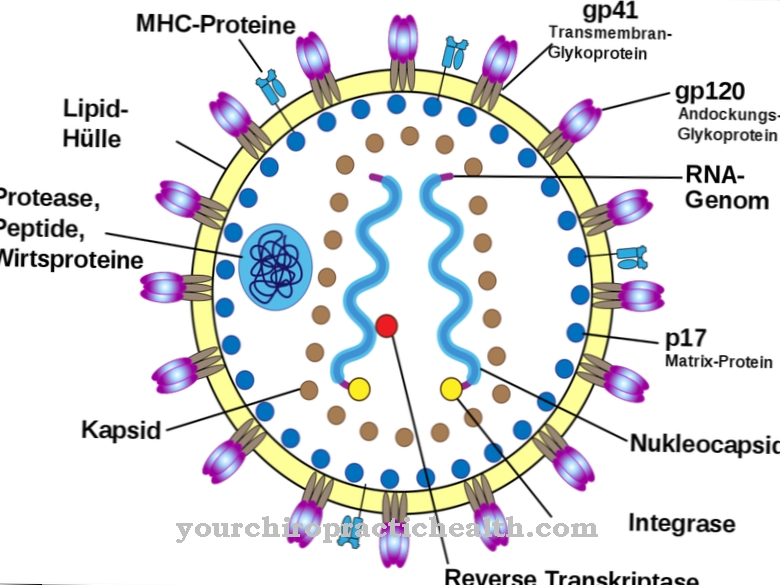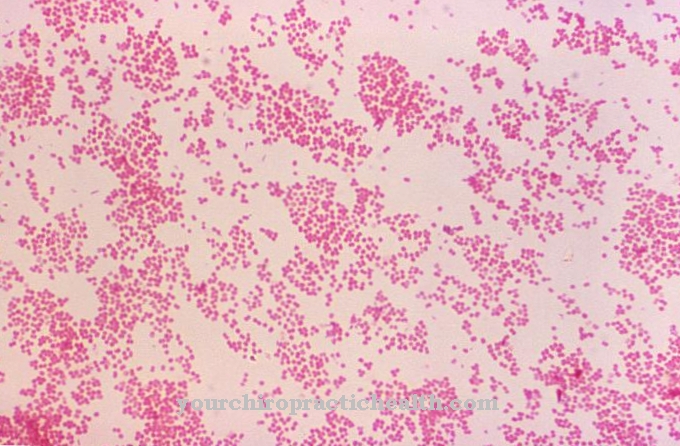Flaviviruses are part of the Togaviridae and include several species that can cause different diseases - including tick encephalitis, St. Louis encephalitis, Japanese encephalitis, and Murray Valley encephalitis, as well as yellow fever and dengue fever.
What are flaviviruses?
The flavivirus is not a single pathogen; Instead, the term describes a genus of viruses that can cause various diseases in humans. The flaviviruses belong to the Togaviridae, which were previously known as ARBO-B viruses. The abbreviation stands for the English term arthropod-borne virus and refers to viruses that have a similar infection mechanism, but do not otherwise have to be related to each other and do not necessarily have other similarities.
As is usual with viruses, the genetic material of the pathogen is in an outer shell that does not have its own organelles. Viruses do not have their own metabolism, but are dependent on a host in whose biological processes they intervene. In the case of the flaviviruses, human cells, among other things, serve as hosts. Ticks, mosquitoes and similar insects can transmit the virus.
Occurrence, Distribution & Properties
Flaviviruses are on average 50 nm in size and, depending on the type of virus, have a slightly differently designed, spherical shell. The yellow fever virus, which is also a flavivirus, has a diameter of approx. 22-38 nm and can get from one person to the next with the help of mosquitoes. When flaviviruses are transmitted, the pathogens get into mosquitoes or ticks when they suck their blood.
If they then stab or bite another person, the viruses can also infect the new organism. To do this, the virus injects its genetic material into human cells that serve as its host. The genetic information is stored in the form of ribonucleic acid (RNA). At the molecular level, RNA differs only slightly from deoxyribonucleic acid (DNA). The virus then causes its host cell to make copies of itself and thereby reproduce it. The process of reproduction can differ depending on the type of virus.
The various flaviviruses differ not only in terms of their geographical occurrence, but also in terms of the vector they use to get from one host to the next. Tick encephalitis, as its name suggests, usually goes back to flaviviruses that enter the human body through ticks, whereas in St. Louis encephalitis mosquitoes transmit the flavivirus.
Japanese encephalitis is widespread in (South) East Asia and reaches humans via Culex mosquitoes, particularly from pigs and birds. Children in particular develop this form of encephalitis, which can be accompanied by fever, muscle and body aches and chills. Mosquitoes also act as vectors for Murray Valley encephalitis. The rare form of encephalitis can be found in Australia, for example, where it is particularly present in the north of the country.
The dengue virus is also transmitted by mosquitoes and is responsible for dengue fever. It is particularly common in Southeast Asia, with virology distinguishing different types of the virus. Type III and type IV dengue virus is known to cause hemorrhagic fever, especially in children.
Illnesses & ailments
Flaviviruses can cause various diseases in the human body. Encephalitis is inflammation of the brain that can manifest itself in a variety of symptoms. Typical symptoms include fever, convulsions, psychological abnormalities and impaired consciousness.
In addition, encephalitis can lead to neurological focal syndromes that affect certain functional systems. The type of disorder that results depends on which part of the brain is affected by the focus of inflammation. Encephalitis can also spread to the meninges and spinal cord, and more rarely to the roots of the spinal nerves. In some cases, encephalitis leads to permanent damage or death.
Yellow fever is also due to infection with a flavivirus. The most characteristic feature of the disease is the combination of flare-ups and jaundice. Other possible symptoms are circulatory disorders, bleeding, liver and kidney disorders. The fever usually comes on in flares. After the first fever, a day or two may pass in which the patient does not have any acute symptoms before the infection triggers another fever. The relapses result from the phases of virus reproduction.
Dengue fever, which is also caused by a flavivirus infection, is, like yellow fever, a subtropical or tropical disease. In addition to fever, frequent symptoms include: a. Muscle pain, joint pain, headache, lymph node swelling and a rash similar to measles. The fever usually starts 5–8 days after the actual infection and often takes on the shape of a saddle curve: The peaks in the fever curve can therefore be distinguished from one another by a slight drop in body temperature.

.jpg)

























